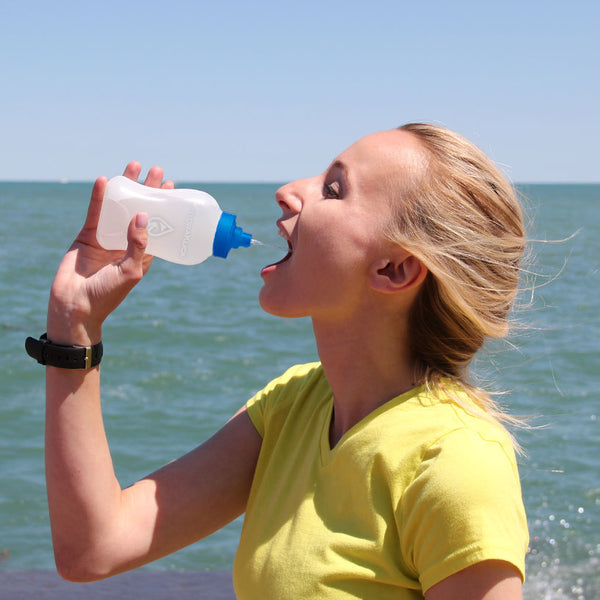The importance of hydration

Proper hydration improves performance, speeds recovery and and reduces the risk of injury.
- An adequate hydration plan addresses your needs before, during and after exercise or activity.
- Common symptoms of dehydration are thirst, headache, sudden fatigue, confusion and elevated temperature.
- Effects of dehydration arise typically after 1-2% loss of body mass or approximately an hour of exercise.
- For a 150 pound person, that equals about 1.5-3 pounds or 24-48 fluid ounces.
- A simple plan to reduce the risk of dehydration is to drink to your thirst.
- A typical plan is to drink 20-25 ounces per hour in small amounts for activities over an hour during average conditions. Amounts should be adjusted depending upon conditions, intensity and body weight. Fluids with electrolytes (sports drinks with sodium) are recommended.
- A more advanced plan is to use your sweat loss rate as a guide. Weigh yourself before and after an hour run. Your sweat rate is equal the amount of fluid you consumed plus 16 ounces for every pound you lost. This should be recorded in various conditions in order to adjust properly. Replenish the total amount lost during and after your workout.
- Consult a hydration calculator for additional guidance to develop a training and race day strategy.
- Practice your hydration and fueling year round to help prepare for races. Avoid using new fuels or gear on race day.
- Hyponatremia is a result of drinking too much water and not consuming enough electrolytes. Some symptoms are dizziness, nausea, vomiting and fatigue. This is an extremely dangerous condition.
- Hydration is optional for activities under an hour since the effects from dehydration are minimal in average conditions.
- Hotter days or more-challenging terrain will require more hydration and fuel sooner than less-demanding circumstances.
Run better.™

